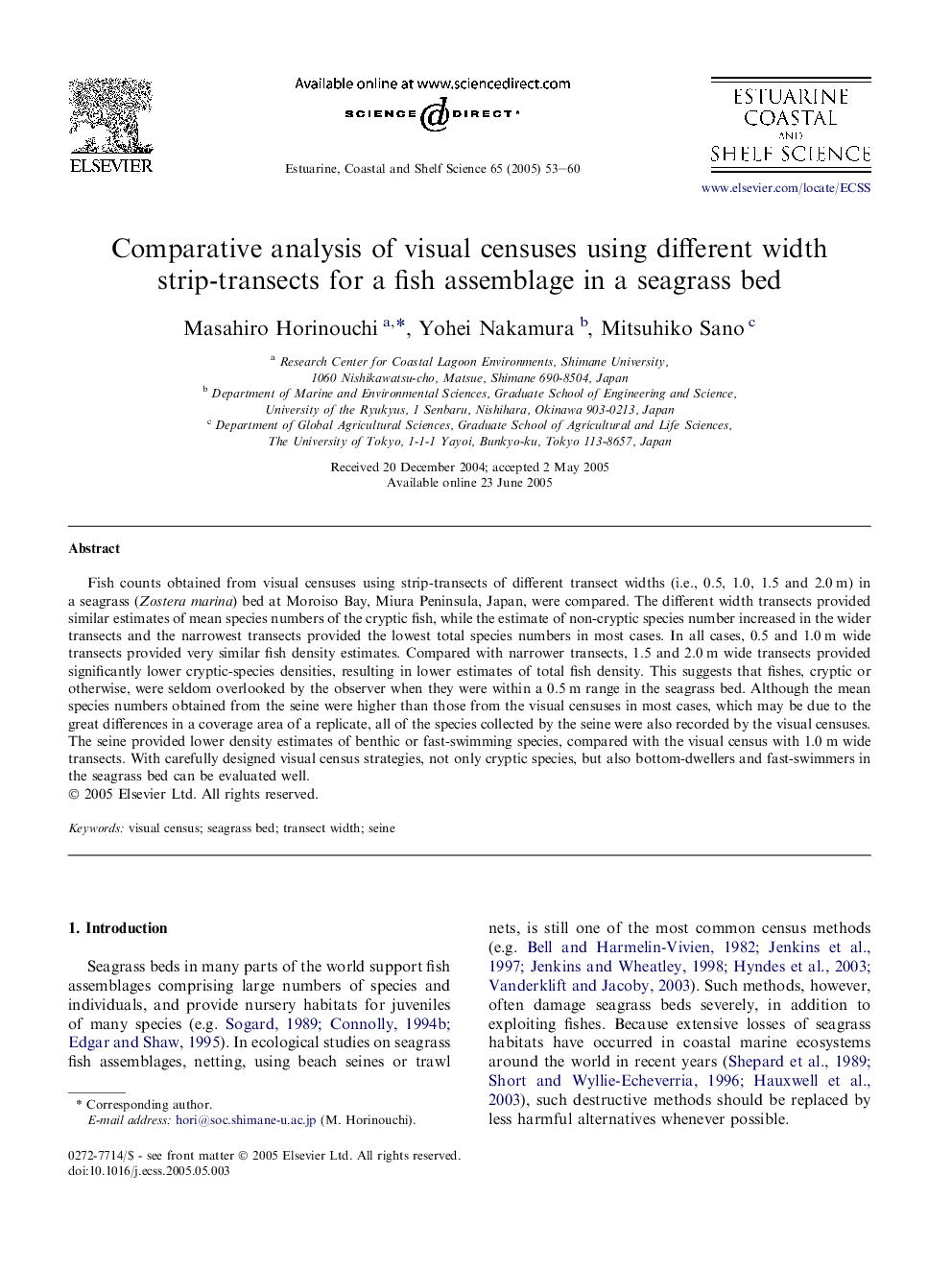| Article ID | Journal | Published Year | Pages | File Type |
|---|---|---|---|---|
| 9480652 | Estuarine, Coastal and Shelf Science | 2005 | 8 Pages |
Abstract
Fish counts obtained from visual censuses using strip-transects of different transect widths (i.e., 0.5, 1.0, 1.5 and 2.0Â m) in a seagrass (Zostera marina) bed at Moroiso Bay, Miura Peninsula, Japan, were compared. The different width transects provided similar estimates of mean species numbers of the cryptic fish, while the estimate of non-cryptic species number increased in the wider transects and the narrowest transects provided the lowest total species numbers in most cases. In all cases, 0.5 and 1.0Â m wide transects provided very similar fish density estimates. Compared with narrower transects, 1.5 and 2.0Â m wide transects provided significantly lower cryptic-species densities, resulting in lower estimates of total fish density. This suggests that fishes, cryptic or otherwise, were seldom overlooked by the observer when they were within a 0.5Â m range in the seagrass bed. Although the mean species numbers obtained from the seine were higher than those from the visual censuses in most cases, which may be due to the great differences in a coverage area of a replicate, all of the species collected by the seine were also recorded by the visual censuses. The seine provided lower density estimates of benthic or fast-swimming species, compared with the visual census with 1.0Â m wide transects. With carefully designed visual census strategies, not only cryptic species, but also bottom-dwellers and fast-swimmers in the seagrass bed can be evaluated well.
Keywords
Related Topics
Physical Sciences and Engineering
Earth and Planetary Sciences
Geology
Authors
Masahiro Horinouchi, Yohei Nakamura, Mitsuhiko Sano,
